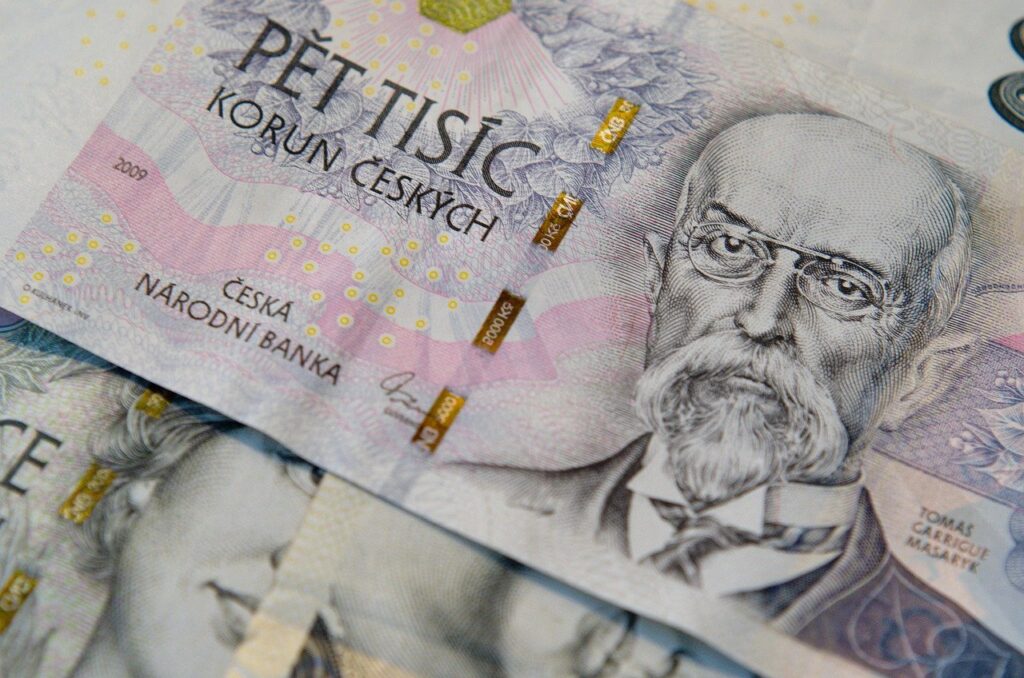Imagine being able to understand and navigate the intricate world of Gold investment with ease. In this article, we will explore the factors that influence the price of gold, providing you with valuable insights that will empower you to make informed decisions. Dive into the fascinating realm of gold prices and discover how various economic, political, and global factors can impact this precious metal’s value. Whether you’re a seasoned investor or simply curious about gold, this article is your gateway to unlocking the secrets behind its ever-changing worth. Get ready to embark on a journey that will equip you with the knowledge needed to navigate the gold market confidently. Pelaburan Emas
Factors that Influence the Price of Gold
Gold, often referred to as the “safe-haven” asset, has proven to be a popular investment option for many individuals around the world. While it is subject to price fluctuations like any other commodity, gold prices are influenced by several factors. In this article, we will explore these factors and discuss their impact on the price of gold.

Supply and Demand
Supply and demand dynamics play a crucial role in determining the price of gold. The global gold market is primarily driven by the balance between the supply of newly mined gold and the demand from various sectors.
Mining Production
One of the major sources of gold supply is mining production. The amount of gold being extracted from mines directly influences the overall supply. Factors such as mining regulations, exploration success, and technical advancements can impact mining production and subsequently affect the price of gold.
can i invest in islamic compliant gold investment
how can i invest in islamic compliant gold investment
KEBOLEHPERCAYAAN DAN LIKUIDITI ETF EMAS
Recycling and Scrap Supply
In addition to mining production, the supply of gold also includes recycled gold and scrap supply. This refers to gold obtained from sources like old jewelry, electronics, and industrial waste. The availability and market prices of these sources can influence the overall supply of gold in the market.
Jewelry Demand
Historically, jewelry has been a significant driver of gold demand. Cultural traditions, fashion trends, and economic conditions in different regions impact the demand for gold jewelry. As jewelry accounts for a significant portion of gold demand, any fluctuations in this sector can impact the overall price of gold.
Industrial Demand
Gold also has applications in various industrial sectors, including electronics, dentistry, and aerospace. Changes in industrial demand for gold, driven by technological advancements and economic conditions, can have an effect on the overall price of the precious metal.
Macroeconomic Factors
Macroeconomic factors, such as the performance of the economy and the overall market sentiment, have a considerable influence on gold prices.
Gross Domestic Product (GDP)
The Gross Domestic Product (GDP) of a country is a key indicator of its economic health. When economies experience strong GDP growth, individuals and businesses have more purchasing power, which can increase the demand for gold as a store of value. Conversely, economic downturns, characterized by low GDP growth or contractions, can lead to a decrease in gold demand.
Unemployment Rate
The unemployment rate is another crucial macroeconomic factor that impacts the price of gold. High unemployment rates can create uncertainty and reduce confidence in the economy, potentially driving investors towards safe-haven assets like gold. Conversely, a low unemployment rate and strong job market may divert investment away from gold and towards other assets.
Consumer Price Index (CPI)
The Consumer Price Index (CPI) measures the average price level of goods and services in an economy. Inflation, as represented by the CPI, can significantly affect the price of gold. Inflation erodes the value of fiat currencies, driving investors towards assets that are perceived to hold their value, such as gold.
Stock Market Performance
The performance of the stock market can have an indirect influence on gold prices. During times of uncertainty or market volatility, investors often seek the relative stability and security offered by gold. In contrast, when the stock market is performing well, investors may be more inclined to allocate their resources towards equities, reducing the demand for gold.
Inflation and Interest Rates
Inflation and interest rates are key determinants of the price of gold. As an asset class, gold tends to perform well in certain inflationary environments.
Inflation
Inflation refers to the increasing prices of goods and services over time. Gold is often considered a hedge against inflation, as its value typically rises during periods of rising inflation. As investors look for ways to protect their purchasing power, demand for gold may increase, thereby driving up its price.
Real Interest Rates
Real interest rates, adjusted for inflation, impact the opportunity cost of holding gold. When real interest rates are low or negative, the cost of holding gold becomes relatively cheaper compared to other investments. This can lead to increased demand for gold, subsequently affecting its price.
Nominal Interest Rates
Nominal interest rates, without adjusting for inflation, can also have an influence on gold prices. Higher interest rates can make alternative assets, such as bonds or savings accounts, more attractive compared to gold, potentially reducing its demand and causing its price to decrease.
Geopolitical Uncertainty
Geopolitical events and uncertainties play a significant role in shaping the price of gold. When geopolitical tensions rise, investors often turn to gold as a safe-haven asset in times of uncertainty.
Political Instability
Political instability, such as elections, regime changes, or policy uncertainties, can fuel concerns among investors. During such periods, the demand for gold tends to increase as individuals seek refuge in a stable and reliable investment.
Trade Wars and Tariffs
Trade wars and the imposition of tariffs between countries can create economic uncertainty and market volatility. In such situations, gold often serves as a safe-haven asset, attracting investors looking to protect their wealth from potential trade disruptions and their associated risks.
Civil Unrest
Civil unrest, protests, or social upheaval can trigger market uncertainties and investor anxiety. As tensions escalate, individuals seek the safety of gold, driving up its demand and price.
Terrorism Threats
Acts of terrorism can have a significant impact on global financial markets and investor sentiment. During times of increased terrorism threats, investors might shift their focus towards safe-haven assets like gold, ultimately influencing its price.

Currency Strength
The strength of currencies relative to each other can impact the price of gold.
Exchange Rates
Currency exchange rates play a crucial role in determining gold prices, especially for countries that are major gold consumers or producers. A weaker local currency compared to the US dollar can lead to higher gold prices in that country, as it takes more local currency to purchase the same amount of gold.
Trade Balance
The trade balance between countries can also affect the price of gold. Countries with a trade surplus, exporting more goods than they import, often accumulate foreign currency reserves. If these reserves are used to purchase gold, it can increase the demand and price of the precious metal.
Central Bank Reserves
Central bank reserves, particularly gold reserves, can have a significant impact on the price of gold.
Gold Reserves
Central banks hold gold reserves to diversify their foreign exchange holdings and maintain financial stability. Changes in central banks’ gold reserves can have a psychological and direct impact on the price of gold. Increasing gold reserves indicate confidence in gold as a store of value, potentially driving up demand and prices.
Central Bank Buying and Selling
Central bank buying and selling activities in the gold market can directly influence the supply and demand dynamics. Large-scale purchases or sales by central banks can impact the overall price of gold, often attracting attention from other market participants and influencing investor sentiment.

Investor Sentiment
Investor sentiment plays a significant role in the price of gold, as it affects the demand for the precious metal.
Risk Appetite
During periods of heightened risk and market volatility, investors often turn to safer assets like gold. The desire to reduce exposure to risky investments and protect capital can increase the demand for gold, resulting in higher prices.
Safe-Haven Demand
Gold has earned a reputation as a safe-haven asset, particularly during times of economic uncertainty, geopolitical unrest, or financial market turbulence. When investors perceive significant risks in traditional financial markets, they seek the stability and security that gold offers, leading to an increase in demand and upward pressure on prices.
Speculative Trading
Speculative trading in gold futures contracts and other derivatives can also impact the price of gold. Speculators, who aim to profit from short-term price movements, can influence prices through their buying and selling activities. Market sentiment among speculators can sway the overall demand for gold, affecting its price.
Global Financial Market Conditions
The overall conditions of global financial markets can impact the price of gold.
Equity Market Performance
The performance of global equity markets can have an indirect impact on the price of gold. During periods of market downturns or corrections, investors may shift their investments towards safe-haven assets like gold, increasing demand and potentially driving up prices.
Bond Yield Movement
Changes in bond yields, particularly government bond yields, can affect the opportunity cost of holding non-yielding assets like gold. When bond yields rise, gold may become relatively less attractive, potentially reducing its demand and impacting its price.
Commodity Prices
As a commodity itself, the price of gold can be influenced by movements in other commodity prices. Factors such as supply and demand dynamics, global economic conditions, and inflation can drive correlations between gold prices and other commodities.

Production Costs
The cost of gold production, including expenses related to mining, refining, and exploration, can impact the overall supply dynamics and indirectly affect the price of gold. If production costs increase significantly, gold mining companies may reduce their output, potentially leading to a decrease in supply and higher prices.
Seasonal Demand
Seasonal factors can also influence the demand for gold and its price.
Wedding and Festive Season Demand
Certain cultures and traditions associate gold with weddings and festive occasions. During peak wedding and festive seasons, demand for gold jewelry tends to increase, potentially driving up prices.
Gold Gift Buying
Gold is often considered a precious and symbolic gift, especially during religious or cultural celebrations. Increased gift-giving during such periods can contribute to higher demand for gold and potentially impact prices.
Jewelry Exhibition and Sales
Jewelry exhibitions and sales events, which attract both local and international buyers, can impact the demand and price of gold. These events provide opportunities for jewelry retailers and manufacturers to showcase their designs and offerings, leading to potential increases in demand and prices.
In conclusion, the price of gold is influenced by a myriad of factors, including supply and demand dynamics, macroeconomic conditions, inflation and interest rates, geopolitical uncertainties, currency strength, central bank reserves, investor sentiment, global financial market conditions, production costs, and seasonal demand. Understanding these factors can assist investors and market participants in analyzing and predicting gold price movements, thereby making informed decisions in their gold-related investments.

